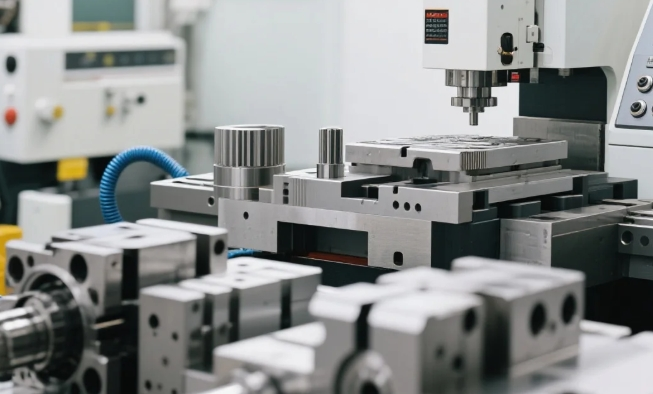Ciao a tutti, appassionati di produzione e osservatori del settore! Se vi state chiedendo quale sia la situazione attuale del settore della lavorazione CNC in Cina, siete nel posto giusto. Facciamo chiarezza e addentriamoci nella dura realtà di un'industria in forte crescita ma anche impegnata in numerose sfide. Anticipiamo il finale: si tratta di una storia di espansione massiccia, ostacoli persistenti e un futuro ricco di potenzialità.
Panorama attuale: crescita, ma non senza lacune
L'industria cinese della lavorazione CNC è indubbiamente caldo in questo momento. Basta guardare i numeri:
- Nel primo trimestre 2025 le vendite di macchine utensili per la lavorazione dei metalli hanno raggiunto i ¥16,3 miliardi ($2,25 miliardi), con un aumento del 4,5% rispetto all'anno precedente e oltre 77.000 unità vendute .
- Qual è stato il protagonista? Le macchine a cinque assi stanno guidando il cambiamento, trainate dalla domanda proveniente dall'aerospaziale, dai veicoli elettrici e dalla produzione di precisione.
- Entro la fine del 2024, il mercato cinese delle macchine utensili CNC ha raggiunto ¥432,5 miliardi ($60 miliardi) , con un CAGR del 5,75% in 5 anni .
Ma ecco il colpo di scena: mentre il volume cresce, il valore rimane indietro . Le macchine importate di alta gamma costano circa 5,5 volte in più rispetto a quelle cinesi esportate. Perché? Operatori domestici come Huazhong CNC e Guangzhou CNC dominano la fascia media-bassa ma grandi player come Siemens e FANUC controllano il 67% del mercato high-end .
Occhioni d'oro: Dove sta andando il denaro intelligente
Non lasciarti ingannare dalle sfide: questo settore è maturo per essere rivoluzionato e crescere. Ecco perché:
1.Policy Tailwinds :
- Il piano "Made in China 2025" prevede >80% di quota di mercato domestico per strumenti CNC di alta gamma entro il 2025 .
- Politiche recenti come la "Piano d'Azione per il Rinnovo su Larga Scala delle Attrezzature" (2024) alimentano gli aggiornamenti.
2.Esplosione Cinque Assi :
- Questo segmento sta esplodendo, con una previsione di cAGR del 16,09% (2022-2027) , superando la media globale del 10,44%. Entro il 2027, il mercato cinque assi della Cina potrebbe raggiungere ¥20,2 miliardi ($2,8 miliardi) .
3.Sostituzione Interna :
- I volumi di importazione delle macchine CNC sono diminuiti per 10 anni consecutivi , mentre le esportazioni sono aumentate al 12% della produzione. Aziende come Ked CNC stanno emergendo—il 54% dei loro ordini nel 2021 proveniva dal settore aeronautico, un tempo dipendente dalle importazioni.
4.Nuovi Mercati che Alimentano la Domanda :
- Veicoli Elettrici (EV), robotica e aerospace hanno una forte domanda di componenti precisi. Esempio: l'azienda cinese COMAC prevede di consegnare 9.641 aeromobili entro il 2039 , un'opportunità di ¥13,25 miliardi ($1,8 miliardi) .
Le Difficoltà: Sfide Che Non Spariranno Ovviamente Da Un Giorno All'Altro
Facciamo chiarezza—la crescita della Cina nel settore CNC non è tutta in discesa. I principali problemi includono:
1.Lacune Tecnologiche Nei Componenti Principali :
- >90% dei sistemi CNC di alta gamma sono importati. Parti critiche come viti a ricircolo, mandrini ed encoder rimangono dominate da THK, NSK e Bosch.
- La affidabilità delle macchine domestiche, sebbene in miglioramento (MTBF fino a 2.000 ore da 600 ), resta inferiore ai concorrenti internazionali.
2.Bassa Penetrazione Interna Nella Fascia Alta :
- Solo ~6% delle macchine CNC di fascia media-alta sono stati prodotti in patria a partire dal 2018. Gli utensili a cinque assi dipendono soprattutto dalle importazioni.
3.Carenze di talento e innovazione :
- La scarsità di operatori qualificati e di talenti in R&S ostacola la qualità. Le indagini mostrano 46% dei problemi di affidabilità derivano da difetti di progettazione/assemblaggio.
4.Intensa concorrenza :
- Il mercato è frammentato: innumerevoli piccole officine combattono contro giganti di proprietà statale e aziende private agili come Crest Century (consegna di oltre 70.000 macchine per trivellazione).
Casi Studio: Successi e Avvertenze
A. - Sì. Storia di Successo: Hongfeng Machinery (Dongguan)
Questo specialista nella lavorazione CNC di componenti auto vanta tassi di conformità dei componenti del 99% concentrandosi su Ricerca&Sviluppo e precisione. Il loro segreto? Ottimizzare i design con per aiutare i clienti a ridurre i costi.
B. - Cosa? Storia Avvertente: ZZ Company
Un tempo stella nascente, ZZ ha perso terreno trascurando aggiornamenti tecnologici e cambiamenti di mercato. Lezione: Innovare o sparire .
La Strada da Percorrere: Verde, Intelligente e Connessa
Dove sta andando tutto questo? Allacciate le cinture:
- Integrazione AI : Stanno emergendo sistemi CNC intelligenti che utilizzano programmazione generativa e diagnostica in tempo reale.
- Spinta verso la sostenibilità : La 'lavorazione verde' efficiente dal punto di vista energetico è ora guidata da politiche pubbliche.
- Aggiornamenti della catena di approvvigionamento : Aziende come Huazhong CNC stanno aumentando la capacità produttiva (aggiungendo 4.500 unità CNC entro il 2028 ) per ridurre la dipendenza dalle importazioni.
Conclusione: Un settore a un punto di svolta
L'industria cinese della lavorazione CNC si trova in un momento affascinante e cruciale. Domanda massiccia, supporto politico e innovazione interna lo stanno spingendo in avanti—eppure lacune tecnologiche essenziali e preoccupazioni relative alla qualità persistono. Per i produttori globali, questo significa due cose: opportunità (strumenti più economici e migliorativi) e attenzione (verificare rigorosamente i fornitori).
Una cosa è chiara: con le macchine a cinque assi che guidano l'innovazione e settori come veicoli elettrici e aviazione che richiedono precisione, la storia dei macchinari CNC in Cina è appena iniziata. Continuate a seguire questo scenario—lo farò sicuramente anch'io.
Hai pensieri o esperienze da condividere sui macchinari CNC in Cina? Lascia un commento qui sotto! ��


